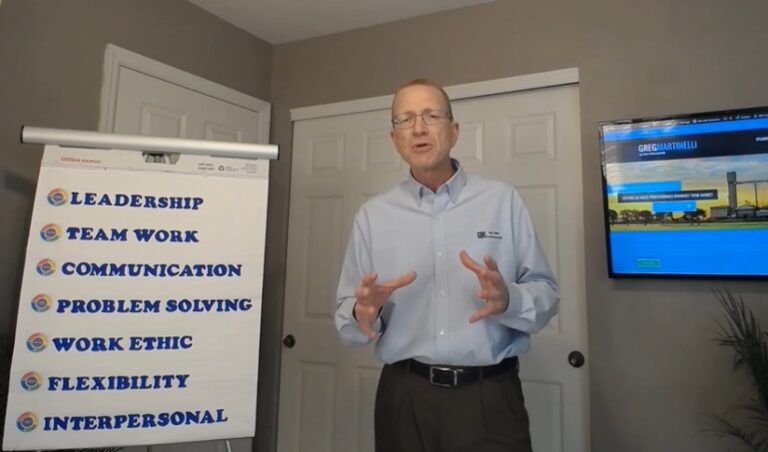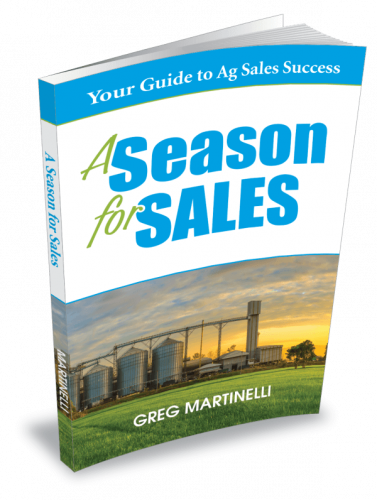- Closing rate
- # of cold calls to make a sale
- # appointments
Useful or useless? Make your selling data work for you
Sitting in my first official sales training session, one of our company’s top salespeople was giving all of us new salespeople a short training presentation.
One of his opening comments struck me as odd. Meaning, I didn’t think it was right, but I was too new and inexperienced to say anything.
He opened with, “Selling is a numbers game! If you want to grow your sales, you have to call on more customers”. He went on to explain, “Let’s say you want to sign up 5 new customers. And it takes 4 appointments to sign up one new customer. And it takes 6 cold calls to get an appointment. Then, you need to make 120 cold calls (5X6X4).”
Have you ever had someone explain selling this way? If not, you might someday. My question to you is, does this seem accurate and helpful or inaccurate and a nonsense connection to data?
Being partially on the analytical side of the DISC profile, you might think I would love this type of analysis. Wrong, and here is why. First, I spent the next 30 minutes inside my head determining my opinion of that statistic. I mentally shot holes in the math on this comment over and over again. I mentally checked out of that presentation as I thought through it.
______________________________
Here is a side note on DISC profiles. When giving an analytical person data like this, give them time to reason it out. Secondly, ask them if they agree or disagree. They have an opinion and will not move past your statistics when selling to them. They will not hear anything you say while they are mentally challenging your statistics.
______________________________
Luckily, someone else in the audience asked about this comment. We spent the next 20 minutes discussing the validity of the measure. We discussed the definition of a cold call, what counts as an appointment, and what if we don’t have 120 prospects to cold call in my market, etc. I was right in the middle of these analytical style questions and challenges to this measure of selling skills.
My desire to be accurate caused me to miss the point.
After many years of thinking about selling skills data, I have come to the point of saying, “Use whatever data you need to motivate yourself toward positive actions”
Instead of getting wrapped up in the accuracy of the equation, it would have served me much more to realize this speaker was trying to get us to make more cold calls.
The positive selling action from this cold call equation was:
- Make more cold calls than you think you need to.
- Realize that you are going to get more rejections than sales
- Don’t let rejection slow your efforts to make cold calls
We argued for a long time that day until we agreed to move on to the next selling skills data point, Closing Rate. Yes, we jumped right into another 30-minute quagmire of analyzing a popular sales statistic.
The speaker asked everyone in the room, “What’s your Close Rate?”
He went on to explain his definition of close rate: The number of “yes, I’ll buy” responses you get divided by the number of closing questions you ask. Again, he mentioned this is a numbers game. I can’t remember the actual number he mentioned that day, but assume it was close to 10 closes to get one “yes” response.
Once again, my mind immediately started to dissect this comment. In that equation, you could easily manipulate the denominator (#number of closing questions). Just reduce the number of times you ask a closing question. You could manipulate the top number by only counting certain questions as closing-type questions.
Completely missing the point that day, I have spent thousands of driving miles thinking about closing rates and what they really mean. I come back to the true benefit of even looking at this equation.
Initially, closing rate is a measure of your ability to segment customers. In the beginning of your selling career, you are probably going to make a common mistake: Going everywhere and selling everyone” (See “The Life & Times of an Ag Sales Professional”)
If you go everywhere and try to sell everyone, your closing rate will be low. Once you get experienced at knowing who the best prospects are for your products, you reduce the number of times you ask closing questions which have no way of landing a customer. So, your percentage of successful closes divided by a lower bottom number goes up. However, that is not a measure of your closing abilities. It is a measure of knowing your market, your niche, and matching your go-to-market strategy to your strengths.
Once you have done that, then your closing rate reflects your ability to sell. The equation will look like this:
Closing Rate = # “Yes” responses / # times you ask a closing question to a customer in your segment
The article I referenced is a great example of this equation. In my early years of selling feed, I went everywhere and tried to sell to anyone: dealers, direct to the farm, distributors, feed mills, tack shops, and hardware stores. I even had small wooden sheds built to put my products into stores that didn’t have enough retail space to inventory my products.
Needless to say, my close rate was very low. I was asking a lot of various businesses a closing-style question. But it was just not a fit.
Fast forward a couple of years into my career and we had a success pattern of selling to certain types of dealers. We finally had a go-to-market strategy. So, my close rate went way up. I only asked when standing in front of the right type of customer. Was I better at my selling skills? Sort of. I certainly was better at identifying/qualifying prospects.
These are just two examples where the statistical measure can be both useful and useless. For me, it’s determined by how you use it. It should increase good selling behaviors and indicate your selling skills.
What statistic or measure are you using to determine your ability to sell? Is it helping you as an actual equation? Or is it just trying to get you pointed towards good selling behaviors? Either is great. Just don’t let it become a discouragement or a point of contention between you and your manager


